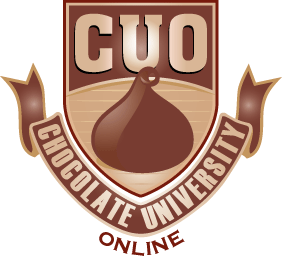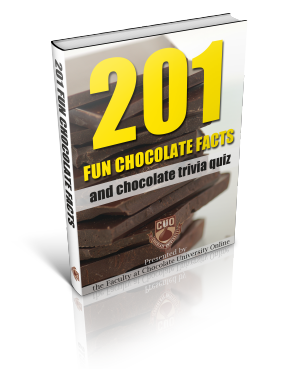Dare to Cook Chocolate: Colorful and Creative Molding Techniques
Do you want to watch something interesting and new? Do you love chocolate? Are you familiar with chocolate art? Well this video will show you that can make your chocolate cravings more satisfactory.
The video by Bill Fredericks, who operates a chocolate business, will demonstrate you on how he will mold and decorate chocolates using his skills and basic techniques that will surely amazed you.
All you have to know will be provided by having a step by step demonstration so you can do it at home and of course make it on the right way.
So enjoy and learn more about Dare to cook chocolate: Colorful and creative Molding techniques.
Categories: chocolate videos Tags: CHOCOLATE, Colorful, Cook, Creative, Dare, molding, Techniques
Can You Substitute Extract instead of Oil-based flavoring for Chocolate Making?
Question by Zahra S: Can You Substitute Extract instead of Oil-based flavoring for Chocolate Making?
I’m trying to make chocolate truffles with creme inside you know like, raspberry, strawberry…etc. So I can’t find oil-based flavoring anywhere but I can find extract. So can I use Extract?
Best answer:
Answer by Stephanie
You can, they just won’t taste as good. Extracts have a higher alcohol content (and not the good kind of alcohol) and taste less like natural flavor.
Add your own answer in the comments!
Categories: chocolate questions Tags: CHOCOLATE, Extract, flavoring, instead, making, Oilbased, substitute
Cocoa and Chocolate: Their History from Plantation to Consumer
Cocoa and Chocolate: Their History from Plantation to Consumer
- ISBN13: 9781144692689
- Condition: New
- Notes: BRAND NEW FROM PUBLISHER! 100% Satisfaction Guarantee. Tracking provided on most orders. Buy with Confidence! Millions of books sold!
This is an EXACT reproduction of a book published before 1923. This IS NOT an OCR’d book with strange characters, introduced typographical errors, and jumbled words. This book may have occasional imperfections such as missing or blurred pages, poor pictures, errant marks, etc. that were either part of the original artifact, or were introduced by the scanning process. We believe this work is culturally important, and despite the imperfections, have elected to bring it back into print as part of our continuing commitment to the preservation of printed works worldwide. We appreciate your understanding of the imperfections in the preservation process, and hope you enjoy this valuable book.
List Price: $ 25.75
Price:
Categories: chocolate products Tags: CHOCOLATE, cocoa, Consumer, from, History, Plantation, Their
Chuao Chocolatier ChocoPod, Firecracker (Dark Chocolate), 4.65 oz., (Pack of 12) Reviews
Chuao Chocolatier ChocoPod, Firecracker (Dark Chocolate), 4.65 oz., (Pack of 12)
- Pack of twelve, 4.65 Ounce (total of 55.8 ounces)
- Premium dark chocolate bar with chipotle
- Latest addition to our bar assortment
The latest addition to our bar assortment!Premium dark chocolate bar with chipotle, salt and popping candy.
List Price: $ 12.00
Price:
Categories: chocolate products Tags: 4.65, CHOCOLATE, Chocolatier, ChocoPod, Chuao, Dark, Firecracker, Pack, Reviews
Is White Chocolate Really Chocolate?
Albeit the fact that it is considered ‘chocolate’, white chocolate isn’t really chocolate. It may be a confectionery imitative of chocolate since it’s also made from the same cacao plant, but its manufacturing process is somewhat special.
The process of making white chocolate primarily involves the drawing out of utilizable components of the cacao bean. Unlike the usual chocolate that makes use of the cocoa powder ground from the seeds, the white version uses only the cocoa butter.
Even though the manufacturing of white chocolate is similar with dark and milk chocolate by some means, it basically lacks cocoa paste, liquor or powder. Thus, it does not hold the important compounds of chocolate such as thiamine, riboflavin, theobromine, phenylethylamine, and serotonin.
According to the U.S. Food and Drug Administration, to be called ‘chocolate’, a product must have chocolate liquor. Since 2004, white chocolate have to be (by weight) at least 20% cocoa butter, 14% total milk solids, and 3.5% milk fat, and not exceeding 55% sugar or other nutritive carbohydrate sweeteners. The European Union has put the same policy in practice, only, there is no limit on sugar or sweeteners.
White chocolate is made up of cocoa butter, milk solids, vanilla, sugar and lecithin. Chocolate makers that use true cocoa butter generate ones of higher quality in comparison to those who scrimp and substitute vegetable fat for the cocoa butter.
True white chocolate is typically a pale yellow or ivory in appearance. The taste of cream and vanilla is heavenly in the mouth unlike those pretentious white creations that are made up of vegetable fat. Their consistency, taste and shelf life are also extremely different.
White chocolates melt quite easily and burn quickly since it is delicate, so take extra care when melting it for recipes like ganache or chocolate fondue.
Related Chocolatier Articles
Categories: chocolate articles Tags: butter, chocolate facts, chocolate information, process, White Chocolate
Chocolate Equals Exercise?
A recent study shows that moderate amounts of high quality dark chocolate can be as good as working out.
Cocoa was found to have a particular compound called epithacin and this supposedly improved muscle like exercise does.
Researchers at Wayne State University in Detroit, Michigan, performed a test on three sets of 12-month-old mice, the counterpart of middle aged humans: one was given epithacin twice a day for 15 days, the second one was also given epithacin and spent 30 minutes on a treadmill, while the third exercised without receiving the extract.
Scientists have seen an increase in the number of energy-producing mitochondria, the ‘powerhouses’ of cells, in the mice that only took epithacin and they had considerably better muscle performance and took a longer time to get tired compared to those that only exercised. It was strange as these mitochondria are normally a byproduct of getting aerobic exercise such as running on the treadmill.
More mitochondria mean more energy, thus, allowing you to perform longer. The research team is hopeful that their experiments could eventually help in working against the dreaded age-related muscle wasting.
According to research leader Dr Moh Malek: “Those getting only epicatechin had a significantly better muscle performance and took longer to tire than those that only exercised. The group doing both showed even greater improvement, so it appears epicatechin combined with exercise may be a viable means to offset muscle ageing.” They were enthralled to learn how natural products can copy and improve the effects of exercise.
Unfortunately though, they are too early in their studies for them to come up with any conclusions about humans getting the same benefits as those of the mice’s.
Dr Malek also added: ”At the moment it would be a leap of faith to say the same effects would be seen in humans. But it is something we hope to identify in future studies.”
Categories: chocolate articles Tags: dark chocolate, research, Science, Studies







